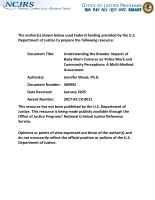Lead by Example: The Effects of Police Supervisors on Officer Behavior
Date Published
2025
Agencies
NIJ-Sponsored
Publication Type
Research (Applied/Empirical),
Thesis/Dissertation





